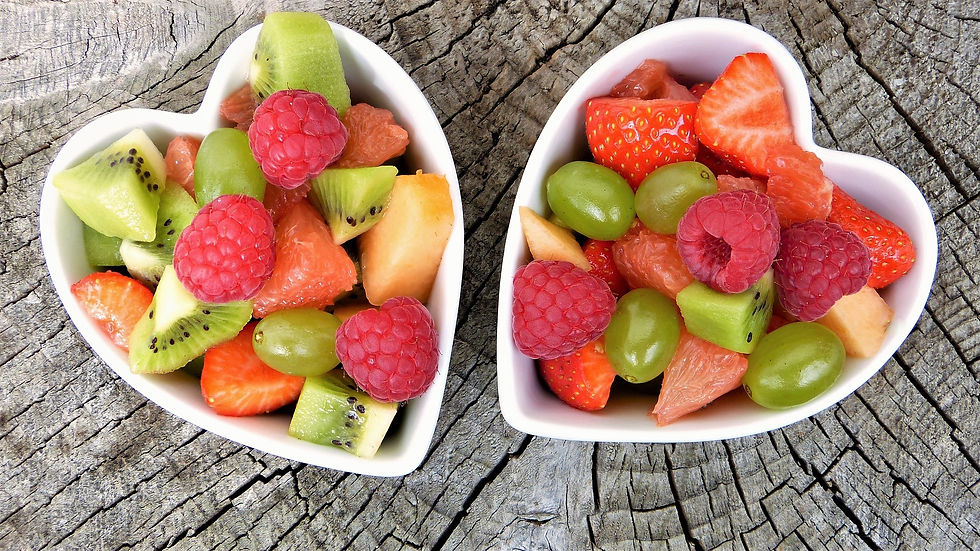Don't have time to get some vitamin D in the sun? Dietitian recommends 10 high-vitamin D foods
- 崇祺 曹

- Nov 10, 2022
- 3 min read
Updated: Nov 11, 2022
Many beauty-loving women are afraid of tanning, and office workers have no time to bask in the sun indoors, which greatly reduces the chance of the skin receiving ultraviolet light and affects the body's synthesis of vitamin D. A nutritionist said that 1/2 of modern people have D deficiency problems, and recommended top ten vitamin D ranking foods, black fungus, salmon, and saury are all listed. The amount of supplementation recommended for different ages is also different. The elderly, pregnant women, gastrointestinal diseases, and people with dark skin should pay more attention to supplementation.

Top 10 Ranked Foods for Vitamin D
Dietitian Zhang Yuxi said that lack of sun exposure and lack of exercise will seriously deprive the body of vitamin D, causing the immune system and bone health to be lost bit by bit. Vitamin D is an important nutrient for maintaining human bones. In addition to relying on sunlight to supplement vitamin D, there is also vitamin D in food. The content is calculated per 100 grams. The top ten ranking foods are as follows:
1. Black fungus: 49.2 micrograms
2. Salmon: 22 micrograms
3. Saury: 19 micrograms
4. Sun-treated dried shiitake mushrooms: 16.8 micrograms
5. Wu Guoyu: 11 micrograms
6. Whole milk powder (4 cups of milk can be brewed): 9.5 micrograms
7. Duck meat: 3.1 micrograms
8. Fresh mushrooms: 2.1 micrograms
9. Eggs: 1.6 micrograms
10. Pork liver: 1.3 micrograms
Don't have time to get some vitamin D in the sun? Dietitian recommends 10 high-vitamin D foods to prevent osteoporosis and anti-virus.
Vitamin D has 6 major functions, combined with vitamin C to fight the new crown
they said that vitamin D3 obtained through food intake is similar to vitamin D produced by skin exposed to the sun. As long as you have a balanced diet, you are not afraid of excess. Vitamin D can increase calcium absorption, help bones and teeth grow and develop, promote the release of bone calcium to maintain blood calcium balance, maintain normal physiology of nerves and muscles, improve protection, and regulate physiological functions. In addition, White House anti-epidemic advisor Anthony Fauci has publicly stated that a lack of vitamin D will affect the body's ability to resist infection. It is recommended that people supplement vitamin D and an appropriate amount of vitamin C because it can resist oxidation and protect immunity. more comprehensive.
They said that according to the dietary nutrient reference intake and instructions of Chinese people, the intake of different age groups is different. Birth to 1-year-old: 10 micrograms (400IU/international unit), 1 to 50 years old: 5 micrograms (200IU/international unit), over 51 years old: 10 micrograms (400IU/international unit). She added that due to their weaker immunity and higher calcium needs, the elderly can supplement up to 25 micrograms of vitamin D from their diets per day. Groups at risk for vitamin D deficiency include the following 4 categories:

1. Pregnant women and babies
If a pregnant woman does not get enough vitamin D during pregnancy, the fetus will also be deficient in vitamin D. In addition, infants and young children do not have much sun exposure. In addition to obtaining vitamin D from breast milk, formula milk supplemented with vitamin D can also be considered.
2. Gastrointestinal diseases
Patients with celiac disease and Crohn's disease are also at high risk of vitamin D deficiency due to poor intestinal absorption.
3. People with dark skin or lack of sun exposure
People with dark skin have more melanin, which can block ultraviolet rays and reduce the ability of the body to produce vitamin D. People who work indoors for a long time and do sunscreen frequently may also lack vitamin D due to insufficient sun exposure.
4. Senior
Elderly people are prone to insufficient nutrient intake due to the inconvenience of movement, less exposure to sunlight, changes in eating habits, and poor teeth and mouth. Therefore, the recommended intake of vitamin D for the elderly may be higher than for adults.




Comments